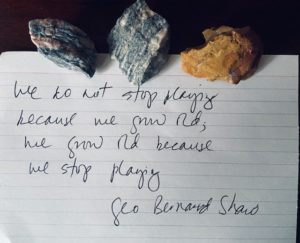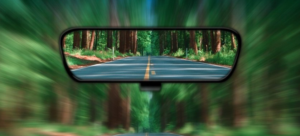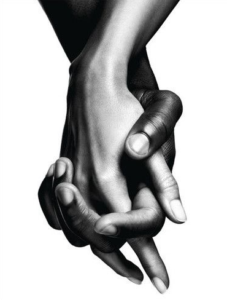Category — Life
My favorite things
Raindrops on roses? Not so much. Whiskers on kittens? Cute. But favorite?
Here, today, are my favorite things. What are yours?



Boom.
Now your turn.
January 29, 2020 No Comments
Life inside
 “Life Inside” is a monthly column about, well, life inside—“inside” meaning inside prison, within the walls of a maximum security penitentiary, behind a 25-foot concrete perimeter wall, behind the bars of a 6’x8’ cell. The column is written by the men in my Lifers’ Writing group, men serving life sentences, some of whom have lived their entire adult lives inside, some of whom will never get out.
“Life Inside” is a monthly column about, well, life inside—“inside” meaning inside prison, within the walls of a maximum security penitentiary, behind a 25-foot concrete perimeter wall, behind the bars of a 6’x8’ cell. The column is written by the men in my Lifers’ Writing group, men serving life sentences, some of whom have lived their entire adult lives inside, some of whom will never get out.
What I’ve learned from these men, what I hope others reading the columns in Eugene Weekly will learn, is that there is life inside, that the drive to make a life—a life of meaning and purpose—transcends where we are, or even who we are. These men live in the most restrictive and darkest of places. They live in a toxic environment: chronic stress, everyday hostility, incessant noise, no privacy, poor food, lack of connection to the natural environment, limited opportunities to maintain family ties, mind-numbing routines. And yet they don’t just survive (although this is, to me, astonishing in itself). They work on restorative justice programs within the prison, reach out to at-risk youth, volunteer as hospice workers or crisis counselors, join therapeutic or service-oriented groups, take classes, commit time and energy to a writers’ group, bake cookies to put in holiday gift bags for fellow inmates. Get married.
My hope is that my book, A Grip of Time, and now these columns, help others to see what I have seen and learned during the past four years: That these guys are human beings, that they should not be defined by (and we should not look at them through the lens of) the single worst moment in their lives. This does not mean being “soft on crime.” It does not mean that we shouldn’t hold wrong-doers accountable for their wrong-doing. It means recognizing the human being.
Oddly, or maybe not so oddly, this is also a lesson I learned when, as research for a previous book, I embedded myself in another dark, restrictive world, the world inhabited by those with Alzheimer’s. Before I spent months working at a residential facility for those with this disease, I viewed people with dementia as empty shells. Because they had lost their memory, I assumed they had lost themselves. The self. I assumed there was no there there. Not true. Even without access to their pasts, they still lived a life. They took pleasure in food, in music, in touch. They made friends and enemies, got angry, laughed.
The life they lived was not like our lives, just as the life the imprisoned men lead is not like our lives. But it is lived. Often fully, Often with meaning and purpose. If we recognize this, we can see them as the human beings they are.
(Illustration by Liza Mana Burns)
January 22, 2020 5 Comments
Keep It Moving

Keep It Moving is Twyla Tharp’s newest book. Nearing 80, vibrant and productive, a creative tornado, a no-nonsense powerhouse, she ruminates on how to live with purpose as time passes.
After the first chapter, gloriously and emboldenly entitled “Take Up Space,” the book devolves into mostly standard generic self-help advice (e.g. take care of your body, take risks, build resilience, etc.). But because it is coming from Twyla Tharp, a woman of enormous energy and extraordinary vitality, it feels authentic (not to mention hard-won), imbued with a deep wisdom—and an engagingly stern attitude—missing from other such “literature” like those perky women’s magazine columns or those mountains of follow-this-fad books.
But it is not the nothing-new-here advice, or the little exercises (I don’t mean push-ups) she offers that has stayed with me, that I want to pass along to you. It is these statements.
To look back is to cling to something well over and behind you. We don’t lose youth. Youth stays put. We move on.
Age is not the enemy. Stagnation is the enemy. Complacency is the enemy. Stasis is the enemy.
Choose to make your life bigger. Opt for expression over observation, action instead of passivity, risk over safety, the unknown over the familiar. Be deliberate. Act with intention.
Evaluate your accomplishments as beginnings rather than endings.
And finally:
Bend in the wind.
Get stronger for the mending.

January 15, 2020 No Comments
Look forward, angel

We can—and should—learn from the past. We can—and should—examine our lives. (The unexamined life is not worth living, Socrates famously said.)
But I wonder. I wonder about all this re-living the past, this ruminating (in the cud-chewing sense) and this continued obsession (both of writers and apparently of readers) with memoir. I belong to a Facebook group, Binders of Creative Nonfiction, and it seems to me that 90 percent of what the women—thoughtful, generous, lovely souls as far as I can tell–are posting about, asking questions about, ”humble bragging” about is memoir. Creative nonfiction—or as I prefer to call this genre I have been working in for my entire writing life—narrative nonfiction, is so much more. It is (or can be about) going out into the world and discovering the lives others live and how and why they live them, the communities they are part of, especially communities hidden from view. We learn more about ourselves that way, too, but we get to look both outward and inward.
I think the reason I am concerned at this moment is that I feel the overwhelming need for us to look forward, not back, to imagine futures, not dwell in the past.
It’s about politics, of course. It’s about 2020 and moving beyond the evil and idiocy of the current government. It’s about not chewing over (and, in some odd way, relishing the taste in our mouths) of this terrible, terrible time. It’s about believing in goodness, in actively, forwardly joining together to make that happen.
But it is also (in the spirit of memoir I just finished criticizing and yet right here am practicing!), about my own life. About what has happened, just recently, that has jolted me, that made me want to chew the cud and re-live what was and is no more, that made me, in my darker moments (that would be 3 am) replay, rewind, replay, rewind and (in my truly dark moments) construct elaborate revenge scenarios.
What I should be doing, what I am now pledging to do, is to stop expending energy on the past I can’t change and use it all—and if you know me, you know I have a lot of it—on the good I can do now.
November 13, 2019 6 Comments
Who are we?

We do not hate each other.
We are not warring tribes.
We are mostly decent people. Yes we are. And we mostly want the same things in life. Yes we do.
I know it doesn’t feel like that. I know that it seems there is vitriol and hostility everywhere, that evil prevails, that conflict is the norm. I have a few things to say about that.
There’s a journalistic axiom: When a dog bites a man, it’s not news. When a man bites a dog, that’s news. In other words: What makes the news is the unusual event, the oddity. The one car crash during rush hour, not the tens of thousands of commuters who make it home safely. The one distraught mother who harms her baby, not the millions who love and protect their children.
Before media streamed, drowning us in 24/7 content, before we carried the world in our pockets, back when tweets were what birds did, those who studied news content and journalism’s “man bites dog” proclivities discovered what they called the Mean World Syndrome. When asked about crime, when questioned about their personal safety and the health of their communities, people vastly overestimated trouble. They thought crime was far more prevalent than it was. They believed their chances of being a victim were far in excess of reality.
I think we are suffering right now from a version of Mean World Syndrome brought on by the masterful cooptation of the news cycle by the nastiest, meanest in our midst, aided and abetted by our bloated media diets, and sharpened by our ignorance of how real people really live.
I don’t claim to be an expert on how real people really live. But I know a lot more now than I did before my husband and I went on two camping trips that criss-crossed America (first coast to coast, then border to border) and brought us face-to-face with places and people in the massive “fly-over” zones that make up most of our country. We stuck to two-lane highways, spent time in towns you never heard of, ate breakfasts in diners, chatted up postmistresses and state park workers, waitresses and grocery clerks, people whose families had lived in the same towns for generations.
For these past 12 days, on this latest trip from the Canadian to the Mexican border down the country’s middle on Route 83, I experienced the country not via my news feed but through personal interactions. And I was heartened by what I saw and heard, by the Black, white and brown kids playing together in the school yard, by the blended Anglo-Mexican families picnicking, by friendly greetings on the street, by the everydayness of life lived in communities that are well loved by the people—the diverse people—who make these places their home. (Read this New York times piece about rural America.)
September 18, 2019 3 Comments
On the road again

We are five days and 800 miles—halfway—into our border-to-border Route 83 road trip. The road (mostly two-lane) stretches from Westhope, North Dakota, on the Canadian border, to Brownsville, Texas, just across the Rio Grande from Mexico, traversing the width of both Dakotas, Nebraska, Kansas, a snippet of Oklahoma, and a Texas-sized chunk of Texas.
It is a lonely road passing through, and I mean right down the main streets, of small (sometimes microscopic) towns you’ve never heard of: Murdo, Max, McCook, Pollock, Blunt, Selden, Oakley, Gem. It passes through two state capitals, one of which, Pierre (pronounced Peer by its 13,000-and-change inhabitants) is the second least populous state capital in the U.S. It passes through Valentine where the only single-named, non-freeway road across the girth of the nation (Route 20) crosses this almost straight-as-a-die north-south highway 83. We were in Valentine almost exactly a year ago on our first let’s not fly over it all, we’ve all come to look for America road trip (which, in case you missed it, you can read about here and in six succeeding posts). Valentine is how we learned about route 83.
And so, the road again. It traverses sometimes astonishing beautiful country—the endless sunflower fields of the Dakotas, the Sand Hills and Niobrara River country of Nebraska—and sometimes mile after soporific mile of ironing board flat Kansas.
And the road teaches.
It teaches how big this country is, and how little we know of it. (The average American has visited only 12 of our 50 states.) It teaches that, as much as we are different from one another, we are also deeply connected by landscape and community and family, by the challenges we face and how we face them.
At a one-pump gas station in a one-street town somewhere in South Dakota, standing in the rain with us, the owner talked about her kids, the son who “went up to Bismarck and made his life there” and the daughter she cares for at home. “We had her in a group home for a while, but she belongs with us,” she said. “She…” the woman hesitated for a moment, “she is 32 but she has the personality of a much younger person.” The matter-of-factness of that statement, the beauty of seeing her daughter that way…it has stayed with me for hundreds of miles.
September 10, 2019 1 Comment
NO to “no”

To all who have encountered NO:
No you can’t.
No you shouldn’t.
No you aren’t.
No I don’t hear you.
No I don’t believe you.
No I don’t believe in you.
No you don’t belong.
No you weren’t chosen.
No you didn’t win.
No I won’t hire you.
No I won’t fund your project.
No I won’t publish your work.
To all who have been told they are too...
old
young
poor
uneducated
overeducated
loud
timid
sensitive
stoic
moody
weird
“damaged”
(fat, skinny, blah blah)
Not to put too fine a point on it, but FUCK ALL THAT.
We can.
We should.
And we are.
Right now.
September 4, 2019 2 Comments
How can you miss me when I won’t go away
 Ha.
Ha.
For maybe the first time since I started this blog (and the one before it), I am NOT writing a post for this Wednesday. So miss me.
Here’s why I am closed for business today:

These are 12 talented, engaged, journalism matters reporters from Europe. And I get to talk with them/ teach them about the craft of nonfiction storytelling. Lucky me.
August 7, 2019 No Comments
Moods

Sometimes the light’s all shinin’ on me,
Other times I can barely see.
And so it goes.
I am fascinated by the way moods come and go and how they are often independent of a particular stimulus or event. You wake up in a good mood. Or a bad one. Maybe it’s because you had a good night’s sleep or a restless one, a pleasant dream or a scary one. Or maybe not. Moods, in the words of a psychologist writing on the subject, tend to be “diffuse with no identifiable object.”
That’s why it’s so—if I can use this word—“magical” when I find myself, mid-day, hours into the daily routine of research or writing interspersed with chores, suddenly feeling lighter and brighter. Gloriously upbeat. Hopeful, sunny, light-hearted.
It’s not because the sun is shining. (I actually like soft gray rainy days.) It’s not because the House voted to impeach Trump. (If only.) Or even that I avoided today’s toxic news cycle. (I know news fasts are a good idea. I just can’t do it.) It’s not because I landed a contract for the new book. (Working on that proposal right now.)
It’s just because. And I love that.
May you be overcome by an inexplicable good mood today, tomorrow or soon.
July 24, 2019 No Comments
Women who marry men in prison

Women married to men behind bars. What do we know about them?
Almost nothing.
What do we think we know? That they are deranged women attracted to psychopaths. Pitiful, lonely women looking for love in all the wrong places. Damaged women. Control-freak women. Drama-queen women. Women with messiah complexes.
Or, they are saintly, self-sacrificing, celibate women who give it all up to stand by their men.
In other words: We pathologize women who choose to marry men behind bars, and we worship women who have stayed married to their incarcerated husbands.
Like all stereotypes, these “types” reflect bits of truth, much exaggeration, and a lot of ignorance. In fact, the reasons women marry/stay married to men behind bars are as diverse, quirky, open-hearted, misguided, optimistic, rational, irrational, well considered and impulsive as the reasons women marry/ stay married to men in the free world.
In this mostly hidden subculture of women married to men behind bars, there are MBIs (those who were Married Before Incarceration) and MWIs (those who got Married While Incarcerated). What modest attention is paid to these many hundreds of thousands of women is primarily focused on MWIs–and that attention is focused on what’s wrong with these women. How could they? Why would they?
There are those said to suffer from hybristophilia, a mental condition where someone—most always a woman—is obsessively attracted to (gets intense sexual arousal from) a man who’s committed notorious crimes. Yes, it is real thing, documented. The more heinous the crime, the more likely an inmate is to receive “fan mail” (and marriage proposals) from women.
There are women who were victims of abuse and mistreatment by fathers, previous husbands, boyfriends. These women, so the logic goes, figure that if they’re in a relationship with a man in prison, he’s not going to hurt them. He can’t hurt them. Unlike in their past relationships, they are safe.
Or there are MWI women who are calculating manipulators on a power trip. They hold all the cards. The guy is dependent on them for news of the outside, for money contributed to the canteen account, for human kindness—all of which they can dispense, or not, at will.
Or, folks, how about this: Many women who marry incarcerated men fall in love with them. That’s right. Love. Intellectual, emotional, spiritual bonding. The sharing of ideas and stories, beliefs, hopes and dreams. Humor, sadness, random observations. You know…the stuff of life. The sociologist Megan Comfort interviewed dozens of women married or involved with inmates, and she found—contrary to what we think we know–that they were not attracted to the “bad boy,” not attracted to the thrill of risky choices, but rather quite the opposite. The women she interviewed were attracted to what we would consider these men’s “feminine” qualities. The men were thoughtful and communicative. They were listeners. They were interested in establishing and nurturing a lasting emotional relationship (a sexual relationship not being possible, not now and maybe never). They were interested in finding a soul mate not a bedmate. I know two such couples. And I deeply admire their commitment to each other.
These hidden worlds are masked by stereotypes. The more we know, the less likely we are to fool ourselves into thinking we know.
June 12, 2019 18 Comments





